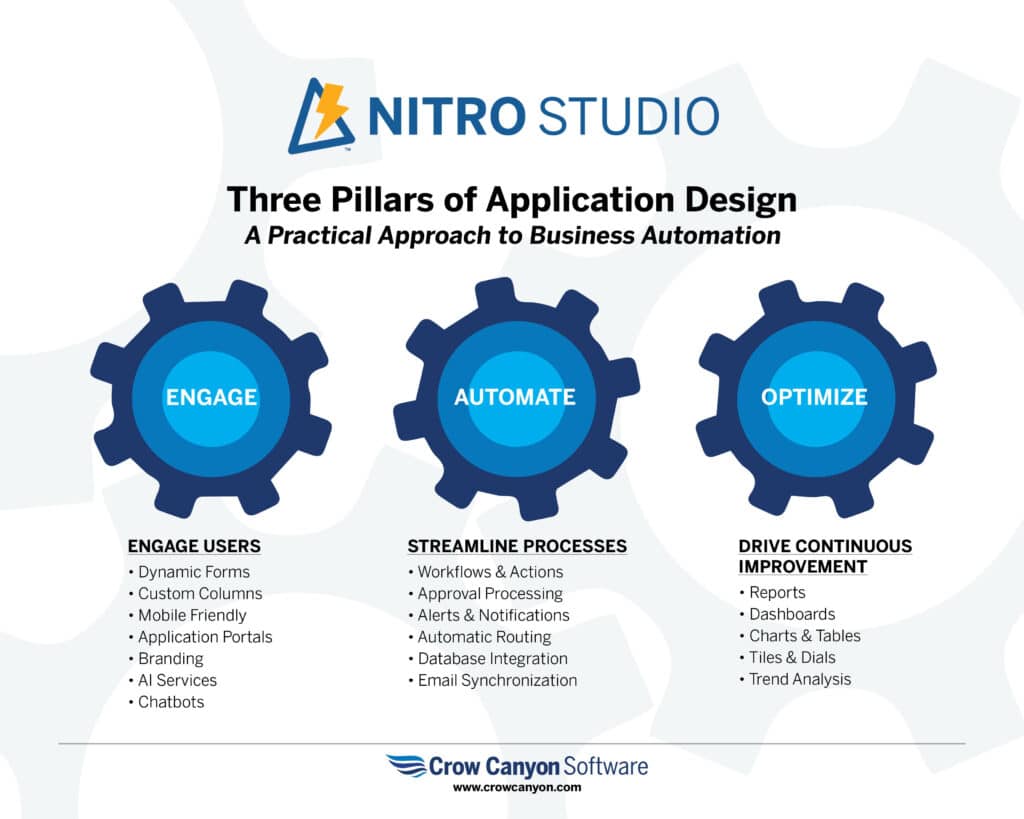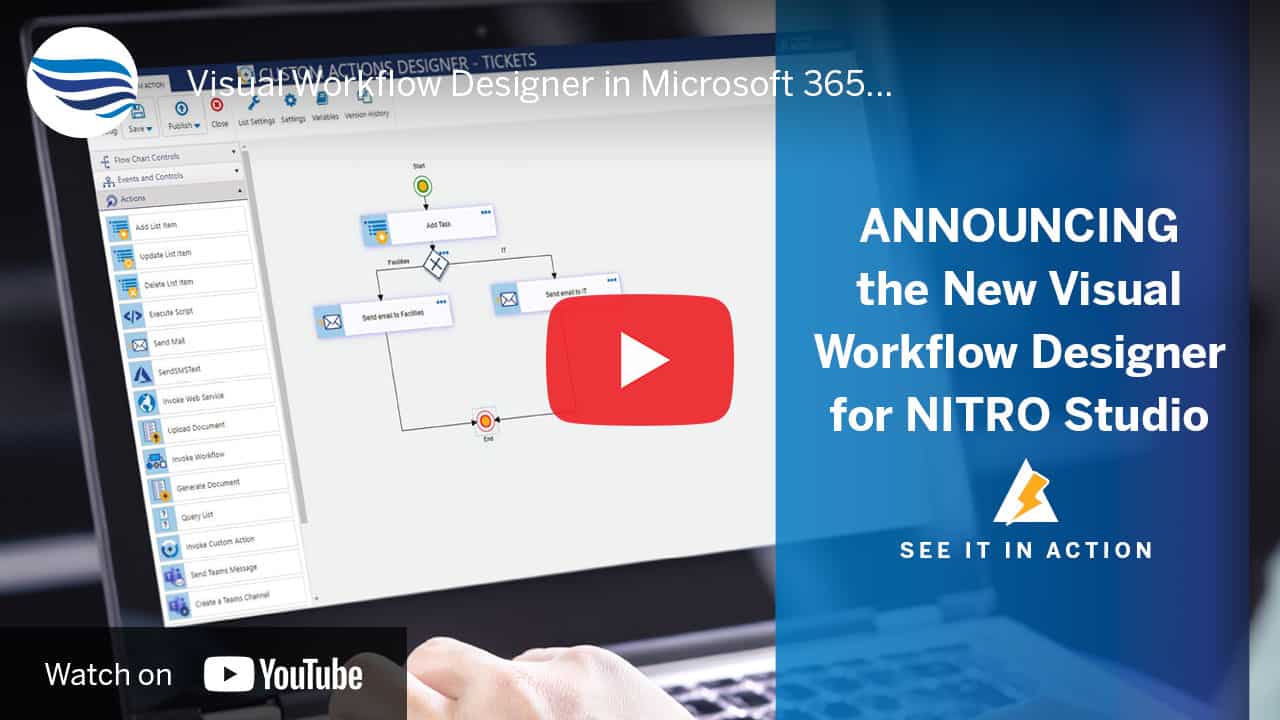NITRO Studio’s
Three Pillars of Application Design
Crow Canyon’s unique approach to developing applications that engage users, streamline processes, and provide reporting that drives service delivery optimization.
About
The “Three Pillars of Application Design” is Crow Canyon’s unique approach to developing applications that engage users, streamline processes, and provide reporting that drives service delivery optimization. This Three Pillar approach is the foundation of NITRO Studio, our application service layer, that powers up SharePoint and Office 365 to become true business application platforms.
We have developed numerous applications and custom development projects powered by NITRO Studio. We also offer NITRO Studio as a stand alone product with customizable features.
Check out the information below to see how Crow Canyon can deliver robust SharePoint and Office 365 applications that drive efficiency and productivity at your company or organization.
The First Pillar
User Interface and User Experience (UI/UX)
“UI/UX” forms the first pillar of our unique NITRO application service layer. With NITRO as the foundation of all our applications and custom development projects, we are able to provide highly capable, full-featured applications for SharePoint or Office 365 as well as quick development and deployment, with lower costs.
SharePoint and Office 365 offer great potential as collaboration platforms. But how do you realize the possibilities? The first step is getting people to use it.
At Crow Canyon, our focus is on creating a user experience that drives engagement and interaction. To do that, we incorporate these “UI/UX” design goals into all of our applications:
- Ease-of-use
- Simplicity
- Information at your fingertips
- Attractive, engaging visual displays
How Do We Actually Do This?
Here are just some of the many elements we use to drive SharePoint and Office 365 user adoption:
The Second Pillar
Workflows & Business Process Automation
“Workflows & Business Process Automation” forms the second pillar of our unique NITRO application service layer. With NITRO as the foundation of all our applications and custom development projects, we are able to provide highly capable, full-featured applications for SharePoint or Office 365 as well as quick development and deployment, with lower costs.
Workflows and Business Process Automation are the heart of any application. They are what streamline the work and power up efficiency and productivity.
At Crow Canyon, our focus is on optimizing business processes with workflows that help you provide better service and quicker resolutions. We want to make your job easier! Our workflow components provide these benefits in all of our SharePoint and Office 365 applications:
- Automation
- Visibility
- Accountability
- Communication
- Full Lifecycle Tracking
What Tools Do We Use?
Here are just some of the many elements that power the “Workflows & Business Process Automation” component of our SharePoint and Office 365 applications:
The Third Pillar
Reporting & Analytics to Optimize Service Delivery
“Reporting & Analytics” forms the third pillar of our unique NITRO application service layer. With NITRO as the foundation of all our applications and custom development projects, we are able to provide highly capable, full-featured applications for SharePoint or Office 365 as well as quick development and deployment, with lower costs.
Reporting & Analytics are crucial to know both the immediate status of work in-progress and the longer-term trends. This important information identifies stuck points and bottlenecks and guides decision-making that drives continuous service improvement.
At Crow Canyon, we want our applications to provide the data and results you need so you can make good decisions and see how to provide better service and faster resolutions to your customers and employees. As the saying goes, “good data = good decisions”. The reporting tools in our SharePoint and Office 365 applications aim to do the following:
- Answer key performance questions
- Identify root causes and issues
- Guide staff performance optimization
- Monitor Service Level Agreements
- Provide immediate real-time reports
- Provide historical and trend reports
How Can NITRO Benefit My Organization?
We have a set of tools that deliver “Reporting & Analytics” capabilities to our SharePoint and Office 365 applications:




